Selected Plants of Navajo Rangelands
Thistle, Scotch
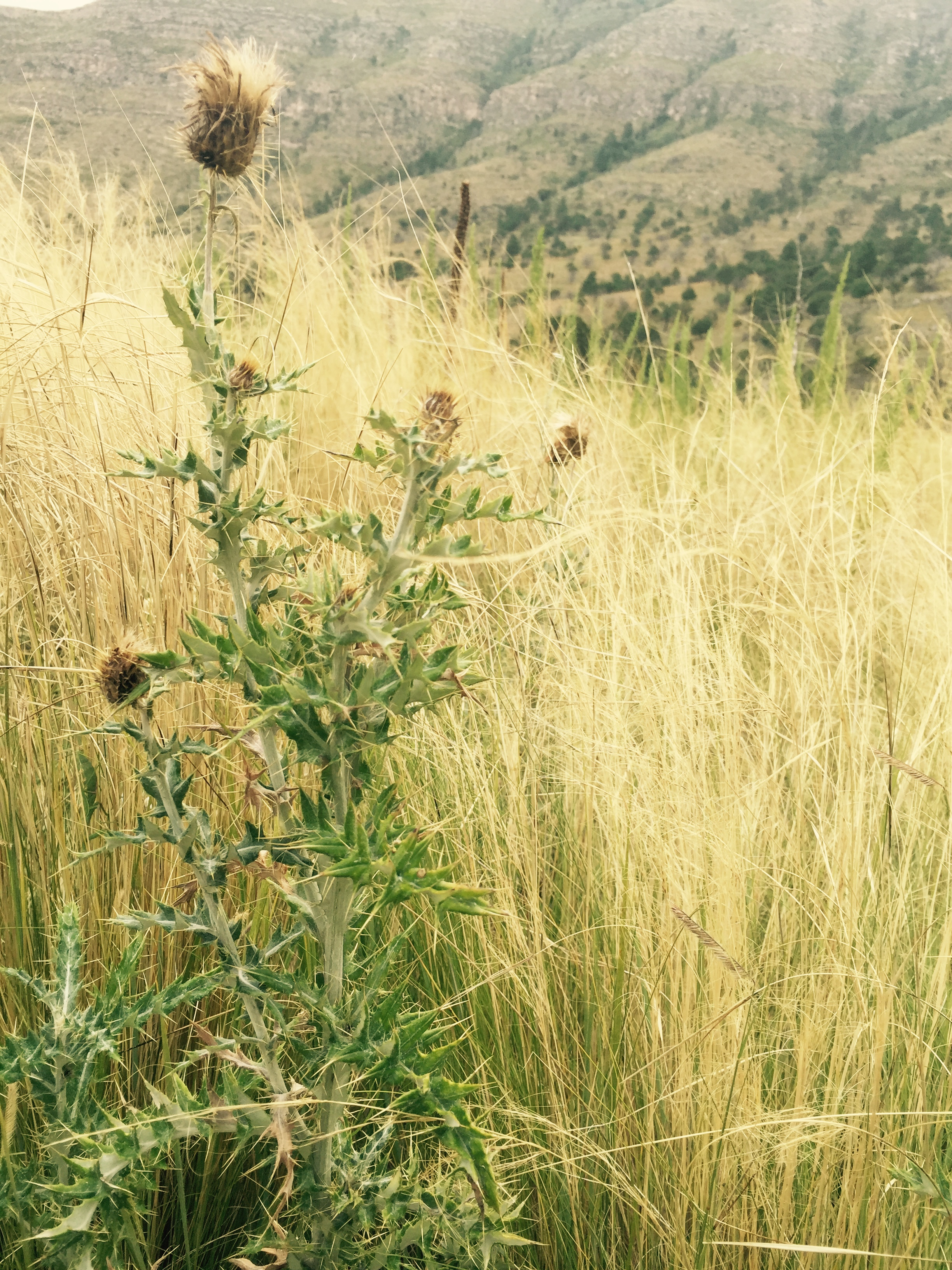
Scotch thistle is a noxious, biennial weed that grows up to 12 feet tall. It has spiny wings along the stem. The leaves have a grayish appearance due to dense hairs on the surface. Flowers are reddish to violet. Scotch thistle is often associated with waste places and roadways, as well as rivers, streams, canals, or other waterways,
It can also be abundant in dry pastures, fields, and rangeland, and thrives in light, well-drained, and sandy or stony soils.
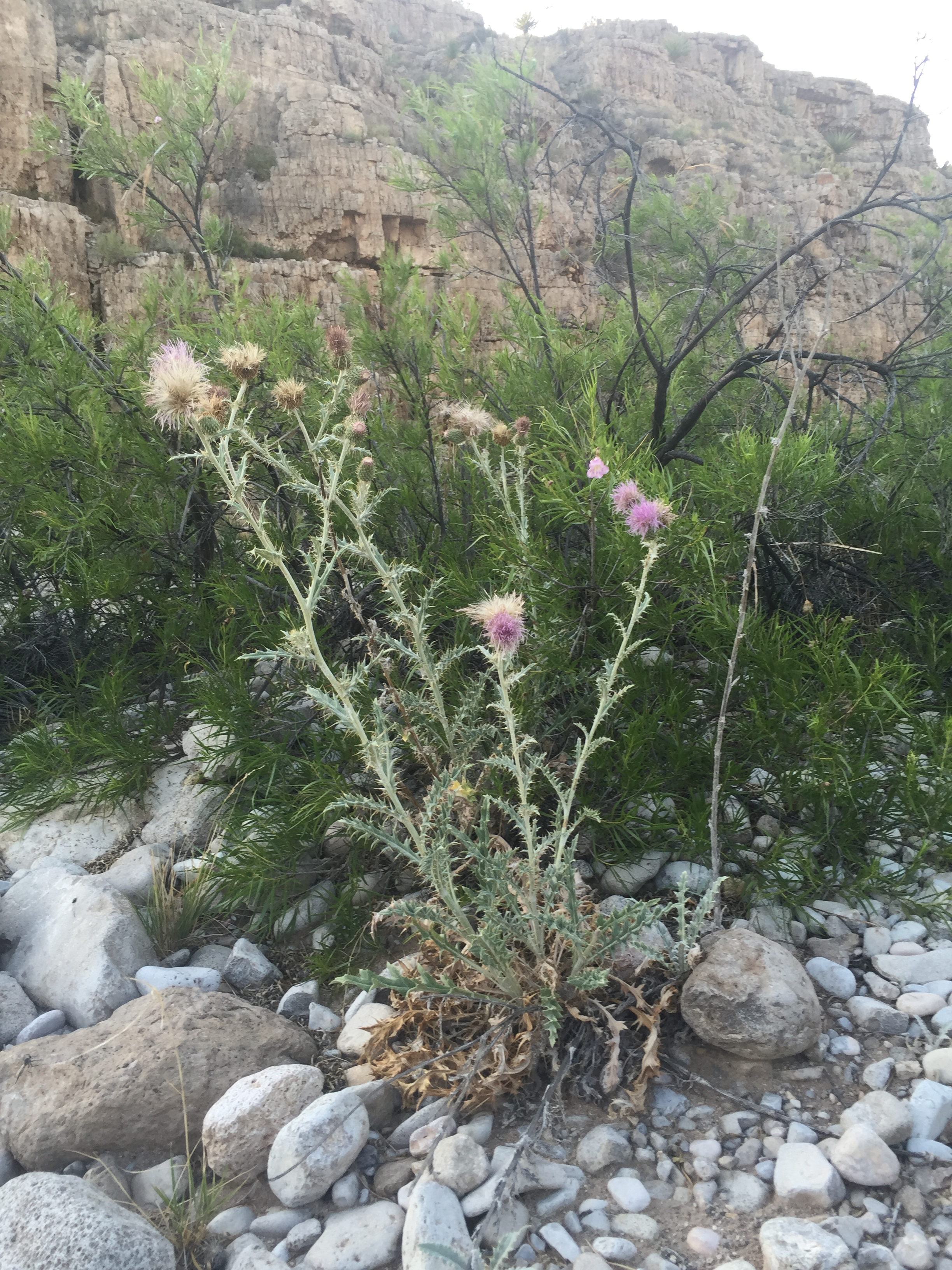
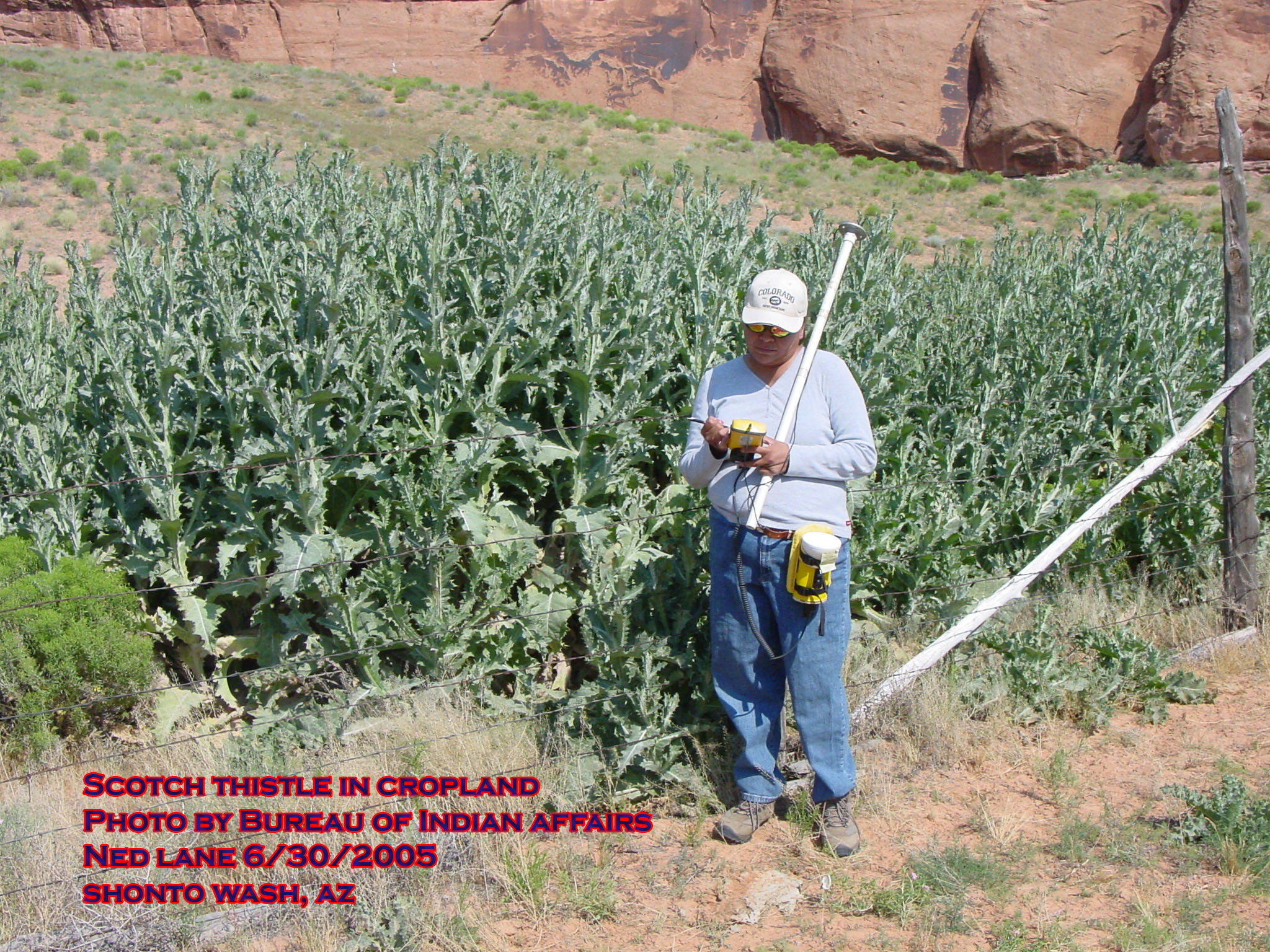
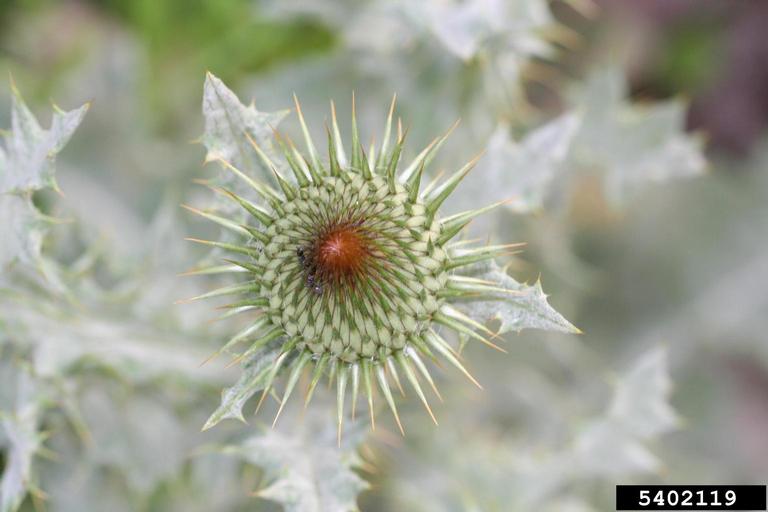
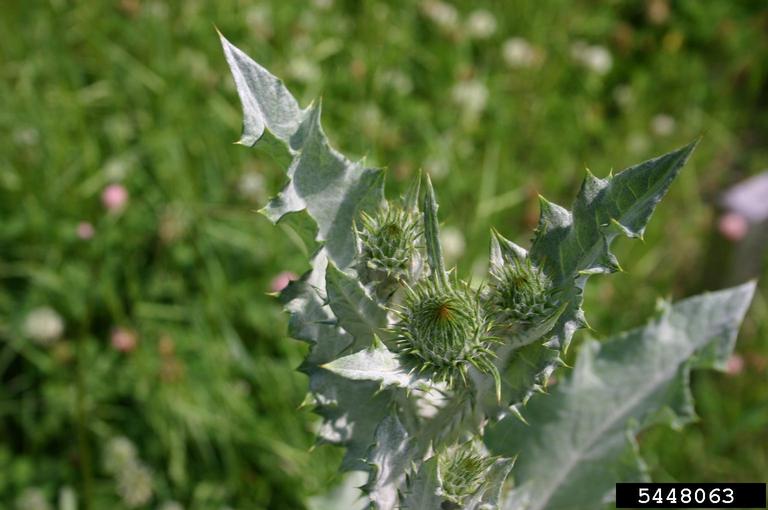
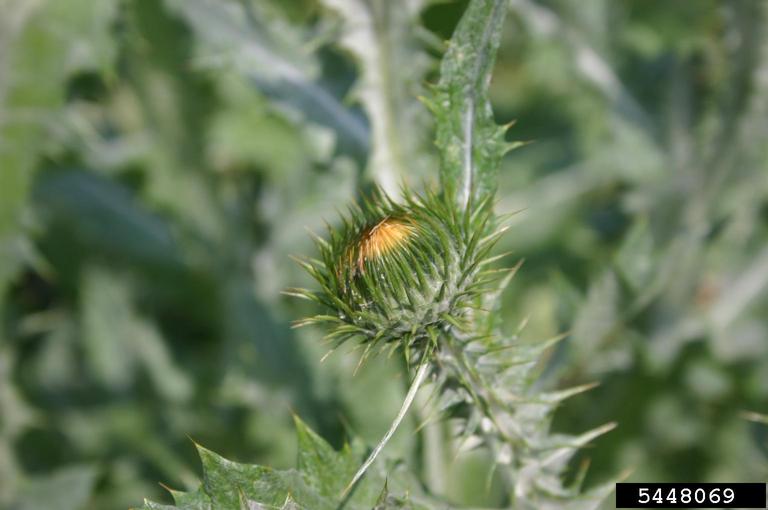
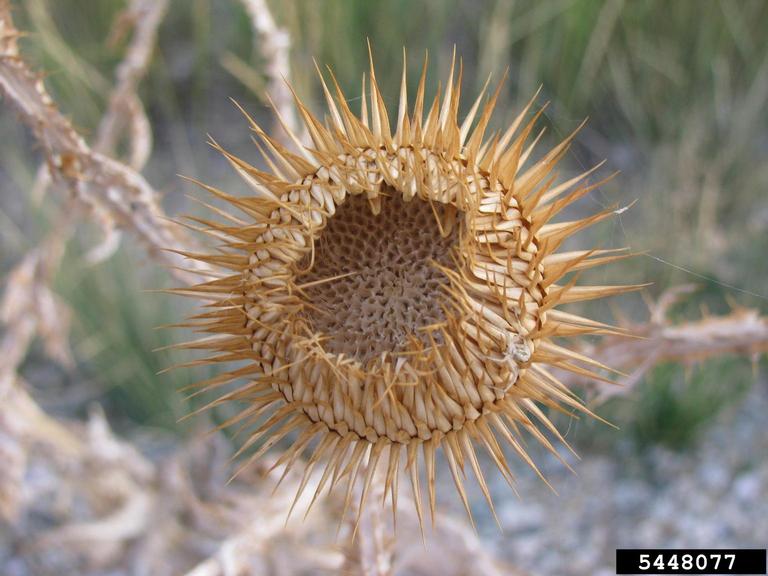
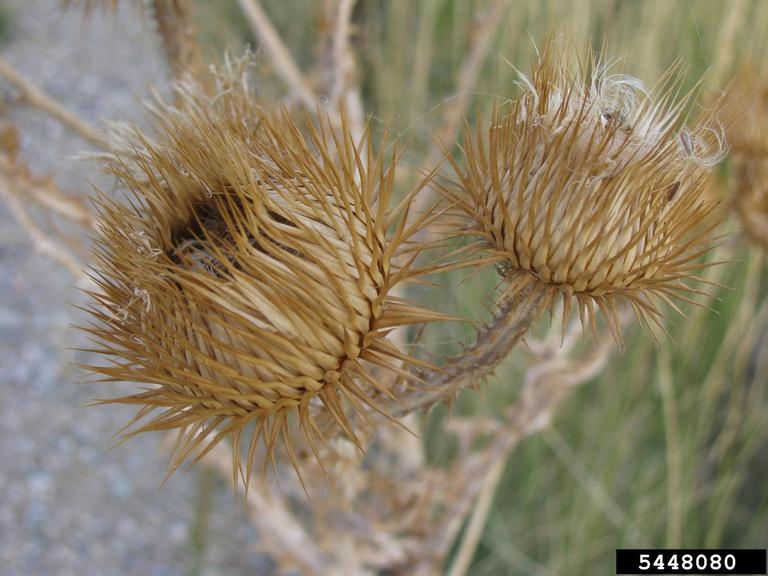
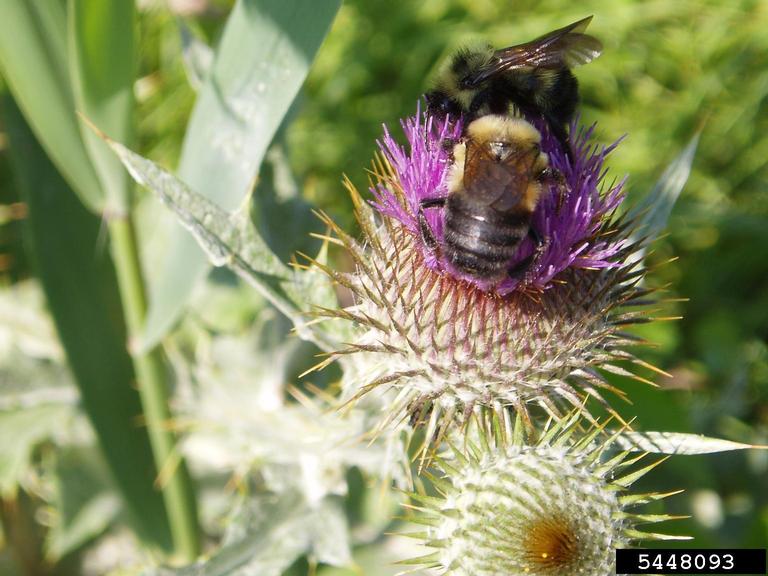
©2018 NMSU Board of Regents.
Individual photographers retain all rights to their images.
Partially funded by the
Western Sustainable
Agriculture Research and Education Program
(westernsare.org; 435.797.2257),
project EW15-023.
Programs and projects supported by Western SARE are
equally open to all people.